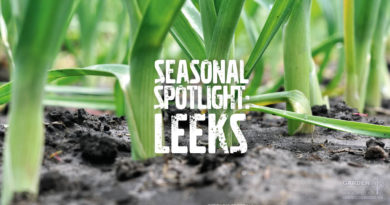Supercharge Your Cannabis Garden with Chitosan
Although you may never have heard of chitin before, this incredible substance exists throughout nature.
Chitin is the main structural component found in the exoskeletons of insects and shellfish like shrimp and lobster, and in the cell walls of fungi. It is the most abundant biopolymer in nature, second only to cellulose, the compound that gives plants their structure.
Chitin, and its derivative compound chitosan, have many unique properties making them crucial to a wide range of industries like cosmetics, water treatment, and surgical materials just to name a few. Chitin and chitosan products are also increasingly being used in agriculture to improve plant health and increase crop yield and value.
Almost all commercially available chitin is harvested from the waste byproducts of the seafood industry. Calcium and protein are first removed from the discarded exoskeletons, and the resulting highly pure chitin then undergoes a deacetylation process to yield chitosan. These refining processes can be performed chemically or biologically with the help of enzymes, and there is a high degree of variability between different producers. Although chitin is abundant, finding a form of chitosan that is both high quality and sustainably produced can be difficult.

Pest & Disease Control
Probably the most common use of chitin and chitosan products in agriculture is for the prevention and control of harmful insects and plant pathogens. Plants have special receptors that detect the presence of insects by sensing the chitosan that makes up their exoskeletons. Stimulating these receptors with a chitosan solution activates the plants’ systemic acquired resistance (SAR). This type of reaction is similar to an immune system response in animals. Activating the SAR has many benefits to the plant, but perhaps the most important in terms of pest control is the increased production of the enzyme chitinase, which has the ability to weaken the exoskeletons of insects and the cell walls of fungi. This function of chitosan treatments could be of huge benefit to cannabis growers battling powdery mildew, botrytis, and Pythium.
Plants aren’t the only source of this powerful enzyme. Many common beneficial bacteria species like bacillus subtilis are also important chitinase producers, and studies have shown an increase in chitinase production when these bacteria are exposed to high levels of chitosan. Bacterial inoculants used in conjunction with chitosan products can provide a powerful barrier against pathogenic root disease by combating harmful fungi. Surprisingly, many beneficial fungi like trichoderma seem to be resistant to the effects of chitosan, so you won’t have to worry about losing them.
(Read also: Triacontanol and Growing Cannabis: Miracle or Snake Oil?)
The pathogen preventing benefits of chitosan don’t just apply to fully grown plants. Studies on various plant varieties have shown that pretreating seeds in a solution of chitosan for as little as 60 minutes can help improve germination, reduce fungal infection, and increase seedling survival rate. This could prove to be a great tool for growers battling multi-generational systemic fungal disease.

Plant Health
The SAR response we discussed earlier has benefits beyond pest and disease resistance. Studies on many different varieties of commercial crops have shown increased production of secondary metabolites like flavonoids, stilbenoids, terpenoids, lignans, and alkaloids in plants treated with chitosan. This ability to increase oil production may be another weapon in the plants’ insect defense arsenal, and it stands to reason that cannabinoids would be among the compounds produced. Other studies have linked chitosan exposure with increased brix levels. Exposing your plants to chitosan won’t just make your buds stickier; it might increase their sugar content.
Chitosan is also a powerful micronutrient chelator with a strong positive ionic charge. It travels through the xylem and phloem easily, and a foliar– or root-drench application can distribute nutrients throughout the plant within minutes. This chelating ability and positive charge should be taken into consideration when mixing up a hydroponic or foliar solution, since negatively charged minerals, like some forms of phosphorus, will eventually bond with the chitosan ions and become unavailable to the plant. This same action may have the potential to worsen nutrient deficiencies in some scenarios, so be sure to use a product that’s compatible with the other nutrients and supplements in your feeding program.
(Read also: Harpin Proteins: Enhancing your Plant’s Natural Defense Systems)
Another important benefit of chitosan is its role in drought resistance. Plants exposed to a foliar application will quickly constrict their stomata. This may again be in response to a perceived threat of infestation, since small pathogens can enter the plant through stomatal openings. Constricting the stomata gives the plant the ability to reduce transpiration and save water without impacting yields. That could be especially important for outdoor cannabis plants in dry environments.
Many of the effects of chitosan have been known for more than a century, and researchers are still finding new uses for this amazing material. Test applications of chitosan on various plant species have shown an increase in the size and growth rate of roots, and an increase in the number, size, and quality of flowers. Fruits and flowers treated with chitosan have shown longer post-harvest life and higher market value. Despite ongoing research, the mechanism of action for most of these functions remains largely unclear.
Conclusion
With more and more benefits being discovered, chitosan might just be the magic-bullet supplement cannabis growers have been looking for, doing what macro– and micronutrients can’t do on their own.
Chitosan combined with beneficial bacteria creates a powerful enzymatic barrier against pathogens, and the activation of the SAR response elicits many health benefits for the plant. The natural abundance of chitin combined with the solubility of chitosan makes these products sustainable and easy to use. Give chitosan a try and see how it can improve your garden.




